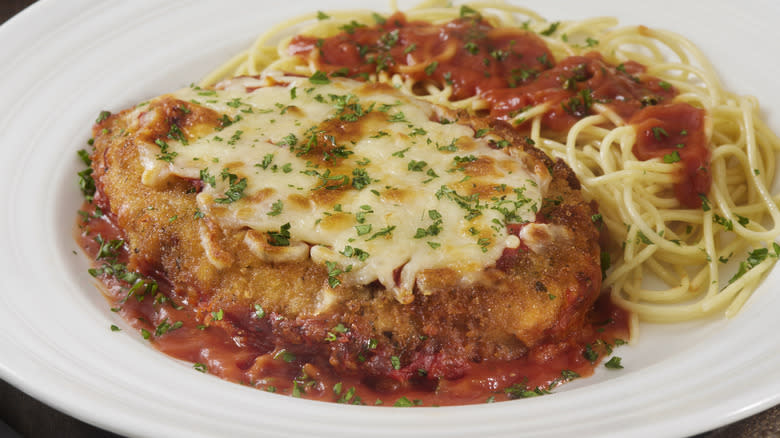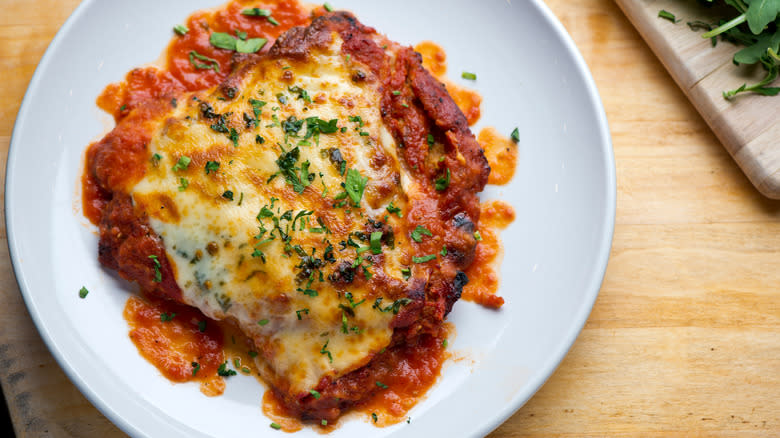How To Use Cheese To Prevent Chicken Parm From Getting Soggy

Trying to replicate your favorite restaurant's chicken parmesan recipe only to end up with a soggy mess can be frustrating. This is no reflection on you as a cook — the very nature of chicken parm is predisposed to sogginess. Fortunately, you can avoid this by merely switching the placement of the cheese and sauce.
While the typical method for making chicken parmesan is to spread the sauce across the chicken first and then follow with cheese, this is a one-way ticket to a soggy mess. Whether fresh or dry, breadcrumbs are highly absorbent and will take on wetness from the sauce, cheese, and meat itself. With three different sources of moisture, it's unsurprising that this dish is susceptible to sogginess. With the cheese-first method, some of its moisture will still seep in, but the cheese will also form a barrier between the crumb and the sauce. This is possible because, when melted, the cheese's protein bonds are stretched rather than broken down completely, which enables it to keep some shape even in a liquid state.
If you want to maintain the appearance of a classic chicken parmesan topped with cheese, all you need to do is sprinkle extra on top once you've added the sauce. With this method, you get a crispier cutlet and more cheese — it's a win-win.
Read more: 41 Must Try Hot Sandwich Recipes
Other Ways You Can Avoid Soggy Chicken Parm

If you find that switching the cheese and the sauce isn't enough to prevent sogginess, there are plenty of other tricks you can deploy during the cooking process. The first is to make a thicker sauce and use less of it while cooking. Mastering thickening techniques is one of the key secrets to making incredible sauces, and there are plenty of things you can add to a chicken parm sauce without spoiling its overall flavor. Using the right pureed vegetable, for instance, can add an earthy richness to your sauce while also thickening the texture, meaning less moisture can seep into the cutlet.
Another way of reducing moisture is to alter the crust. Rather than only using breadcrumbs, try mixing them with dried herbs or some extra parmesan cheese. Because these ingredients are less starchy, they won't take on excess moisture. You could also switch out bread crumbs for panko, as panko's larger flakes are less absorbent and create a crunchier dish.
Also, don't forget that your chicken parmesan deserves quality cheese. You'll want something melty that's moist and high in fat, as the milk proteins will separate more easily, giving you a gooey pull without burning or turning into sauce. That's why mozzarella is typically used in chicken parmesan — rather than turning into a creamy sauce, it stretches for an elastic, cheesy pull.
Read the original article on Mashed

